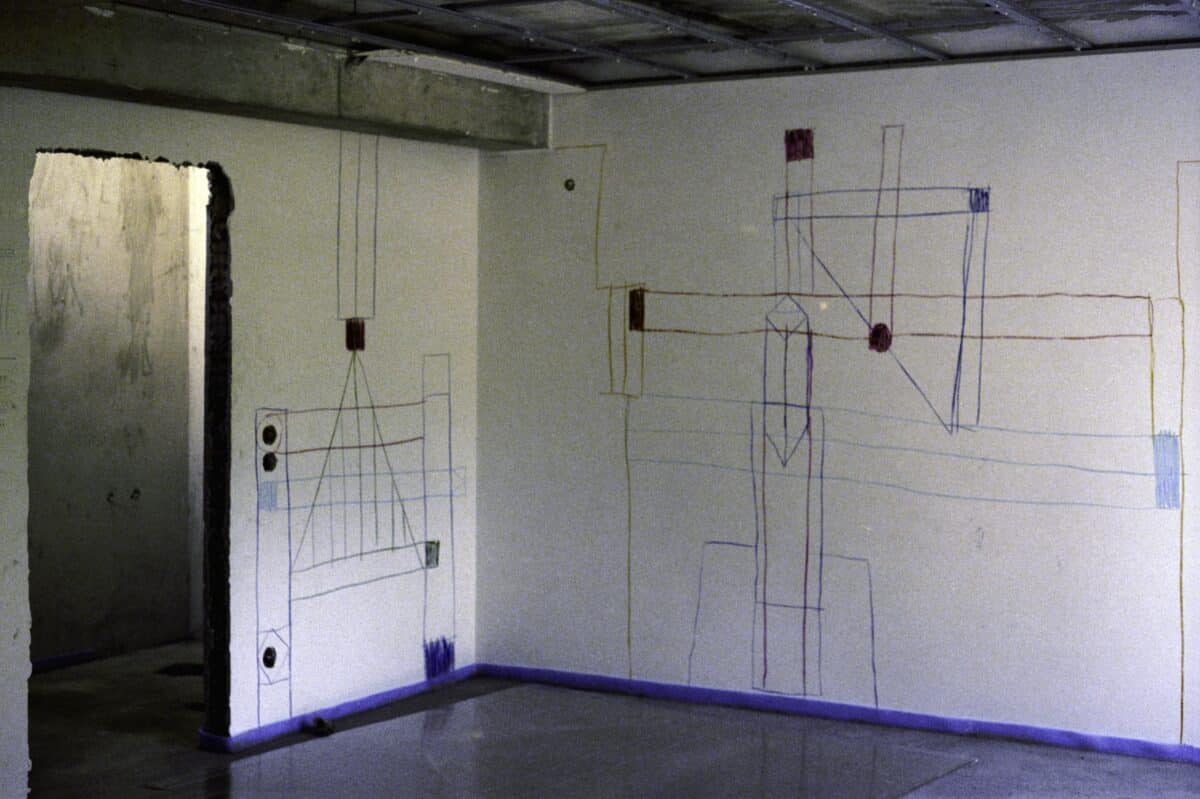Nuno Melo Sousa: on walls
This text is a part of a series of reflections by Nuno Melo Sousa on his drawing practices. Click here for the series introduction.

Liberation.
When I was a kid, I could not draw on walls. It was forbidden in my parents’ house. At school, we could pin pieces of paper. But still, we could not draw on walls. They were everybody’s walls.
Everywhere and nowhere to be found; there was no possible way of no transgression when writing on walls.
Now I am allowed to.
Now, I can.
At first, my heart accelerated, and I was too quick not to be seen. Looking for that late daytime, for a new group of drawings to materialise, spread across corridors and rooms, before next morning’s workers arrive. If there were ongoing works on the first floor, I would sneak to the second floor. Then, I lost my shyness and, between chambers and artisans—still, rather alone—I’ve started to detach from guilt. As of now, I’m just those drawings and I don’t care if I am the not-so-sane one, dripping coloured beams and columns and plans on walls. When confronted, I can always pick up my line and say that I am the author and architect, I deserve to do what I do.
The truth is, I don’t need it.

Liberated as I am, I merge mental structures with white-plastered faces and sometimes I can climb buckets as mountains to keep those lines upon the ceiling.
And I learn.
I think I do.
I hope I do.
I am eager to miss a line by mistake and connect it to the wrong physical element – a corner, a hole, a curb, a joint. They’re a path to clarify problems of dichotomy, language, alphabet, miscommunication.
Literally connecting dots.
And, besides being self-explanatory, a choreography is required: the need to be wider than my arms and legs.
To walk along a line.
To spread through corners and edges.
They also require contemplation as they will stand still and each error counts.
Sometimes the workers come up with theories and ideas about the summoning of these murals. They can relate to some aspect of physicality they may transmit—they foresee a double height, two crossing beams, and four or so pillars. I am always open to discussion.
Ultimately, the murals rest behind closets, wardrobes, shelves, stone and layers of paint.


– Nuno Melo Sousa